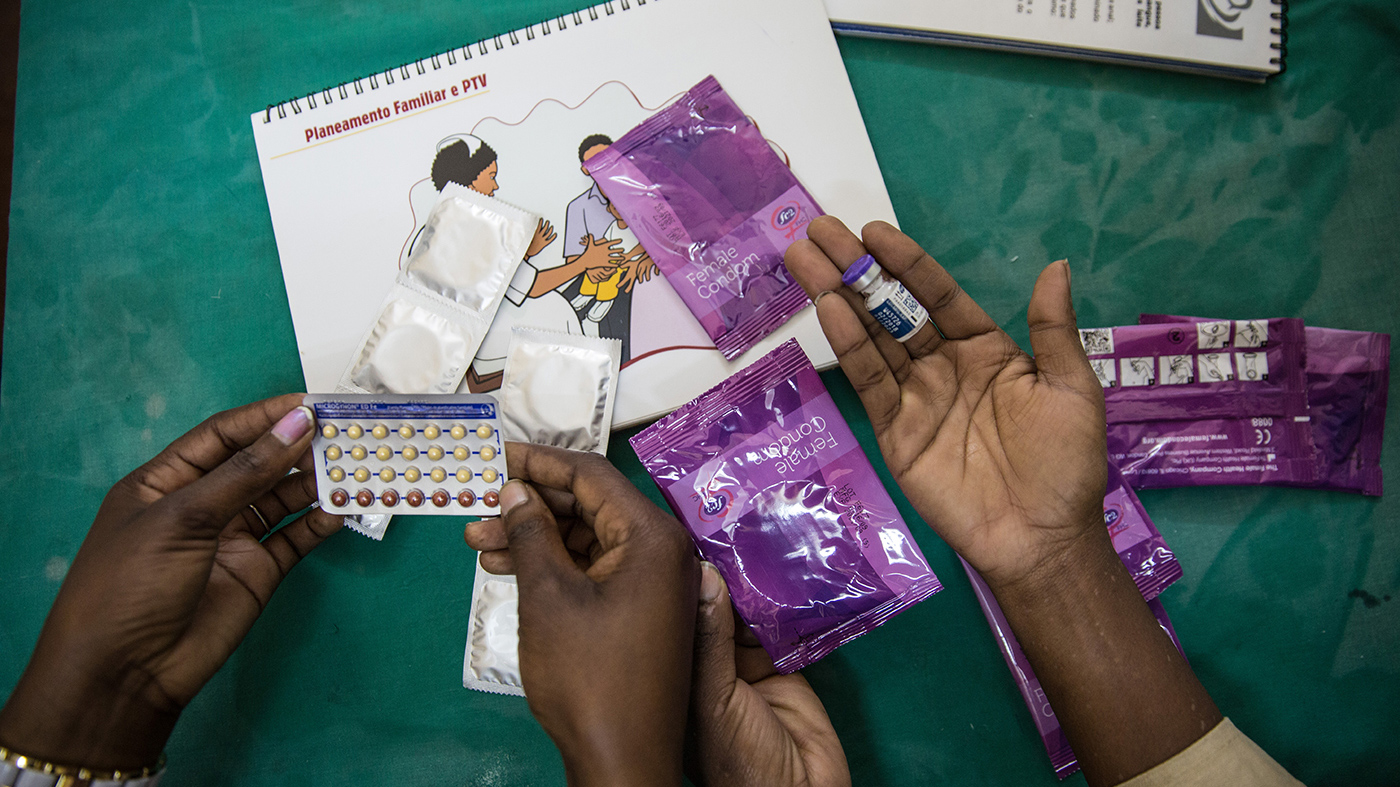DREAMS Initiative Expands in Mozambique
Summary
- Adolescent girls and young women (AGYW) around the world are at high risk for HIV.
- In Mozambique the HIV prevalence among youths 15-24 years-old is 5%, but the prevalence among AGYW is 7.1%, UNAIDS data shows.
- The DREAMS initiative provides AGYW with safe spaces where trained nurses offer health education on HIV, violence prevention, and sexual and reproductive health.
- U.S. Government support will expand DREAMS to new areas in Mozambique to assist more AGYW.
The DREAMS initiative helps prevent HIV infections among adolescent girls and young women (AGYW). The US Centers for Disease Control and Prevention (CDC) supports efforts to improve health services for this highly vulnerable to HIV population.
Since 2015, DREAMS (Determined, Resilient, Empowered, AIDS-Free, Mentored, and Safe), has tackled barriers that increase AGYW resilience to HIV in Mozambique. In the same period, new HIV diagnoses among AGYW dropped by more than 25% in the nine districts where it was implemented.
Early pregnancies and marriages, gender-based violence, school dropouts, exclusion from economic opportunities, and limited access to quality health services fuel new HIV infections among AGYW. In 2019 the Joint United Nations Programme on HIV/AIDS (UNAIDS) estimated that 36,000 new HIV infections occurred among AGYW, aged 15-24 years old.
DREAMS is a public-private partnership that receives funding from the U.S. President’s Emergency Plan for AIDS Relief (PEPFAR). In Mozambique the program is co-led by CDC and the United States Agency for International Development (USAID).

AGYW access friendly sexual and reproductive health services in school corners and health clinics supported by CDC. Photo by Ricardo Franco/CDC.
Addressing the drivers of the epidemic in this population requires efforts from multiple sectors and partners from the social, educational, and economic fields. It also demands that health services be adapted to meet AGYW needs. Including the provision of care and treatment services for HIV, other sexually transmitted infections, family planning, and care for victims of gender-based violence (GBV).
In October 2020, DREAMS expanded from 9 to 32 districts across eight Mozambican provinces. The program received a 3.5-fold budget increase, that represents a total investment from the United States Government of $35 million during the 2021 fiscal year. This investment will allow DREAMS to reach approximately 120,000 new beneficiaries, aged 9-24 years old.
Friendly and secure health services for AGYW
An important component that CDC and its partners offer in health facilities are “friendly services” to AGYW. DREAMS’ funding was allocated to build and equip youth-friendly clinic spaces called Serviços Amigos dos Adolescentes e Jovens (SAAJs) in 26 health facilities, which serve both adolescent girls and boys and young women and men.. SAAJs are normally located in an independent area of the health facility and have designated waiting and consultation rooms. Clients report feeling secure while looking for sexual and reproductive health services since they avoid being recognized by community members.
The vision of SAAJs is to be a one-stop-shop where AGYW can access various health services. To that end, CDC’s partners – Friends in Global Health, Elizabeth Glaser Pediatric AIDS Foundation, ARIEL Glaser Foundation, and JHPIEGO – have trained medical doctors, nurses, psychologists, and peer educators.
The offer of friendly services to AGYW is a key component of the activities supported by DREAMS in Maputo, Mozambique. Photo by Ricardo Franco/CDC.
To further reduce barriers for AGYW’s access to health services, CDC and its partners work in school settings within the DREAMS’ catchment areas to operationalize school health corners. These safe spaces have trained nurses who offer health education on HIV and violence prevention, screening for GBV, and sexual and reproductive health. To help prevent pregnancies and sexually transmitted infections, contraceptive pills and condoms are available for sexually active students. The school health corners refer youth to SAAHJs for HIV testing and treatment services.
The DREAMS expansion will allow CDC and partners to build 35 SAAJs in health facilities located in the new DREAMS districts. Plans also include the expansion of DREAMS to more schools in the program’s catchment areas, including the construction of 15 school corners.
Over the past six years, DREAMS brought together many partners to implement activities, including the National AIDS Council, the Ministry of Health, and the Ministry of Education. The expertise of CDC’s clinical partners and USAID’s community partners has improved health outcomes for AGYW and their communities.
Engaging men to protect AGYW
In Mozambique, young women are disproportionally affected by HIV. UNAIDS data indicate that the HIV prevalence among youths aged 15-24 years-old is 5%, but the prevalence among AGYW is 7.1%, more than double that of their male peers (2.8%). Studies on gender norms and dynamics show involvement of younger women with older men – including for transactional sex – contributes to the increased risk of HIV infection among AGYW. For this reason, decreasing the HIV incidence in AGYW requires strong male engagement.
CDC is committed to improve male engagement in health services to reduce risk of HIV infection in Zambezia, Mozambique. Photo by Ricardo Franco/CDC.
Building on this national platform, CDC and its partners are committed to enhancing male engagement activities in the districts supported by DREAMS. This includes, changing harmful gender and masculinity norms to create demand for services such as Voluntary Medical Male Circumcision (VMMC) and HIV testing, counseling, and treatment.